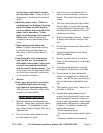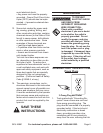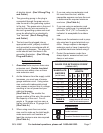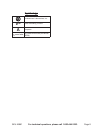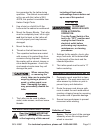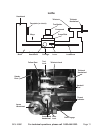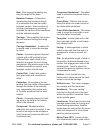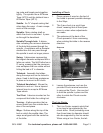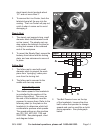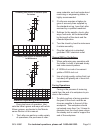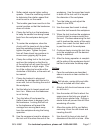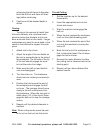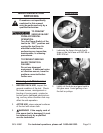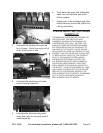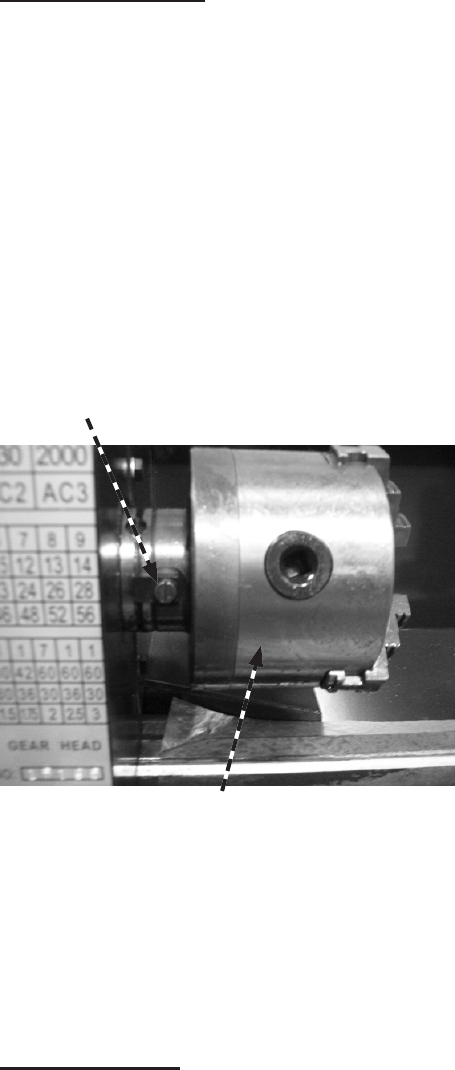
Page 13SKU 45861 For technical questions, please call 1-800-444-3353.
ing male and female parts together
tightly. The spindle has a #3 Morse
Taper (MT-3) and the tailstock has a
#2 Morse Taper (MT-2).
Saddle: An “H” shaped casting that
rides along the ways. A main compo-
nents of the carriage.
Spindle: Main rotating shaft on
which the chuck is mounted. It pass-
es through the headstock.
Spindle Through-hole: A dimen-
sion indicating the minimum diameter
of the hole that passes through the
spindle. A workpiece with a diameter
smaller than this can pass through
the spindle to work on longer pieces.
Swing: A dimension representing
the largest diameter workpiece that a
lathe can rotate. The 9x20 lathe has a
9” swing, meaning that the maximum
size workpiece that can rotate without
hitting the bed is 9” in diameter.
Tailstock: Assembly that slides
along the ways and can be locked in
place. Used to hold long workpieces
in place or to mount a drill chuck.
Tailstock Handwheel: Moves the
tailstock in and out. Has a tapered
internal bore to accept a #2 Morse
Taper shank.
Tool Post: A device mounted on the
compound that holds the cutting tool.
Turning: A lathe operation that re-
moves metal from the outside diam-
eter of the workpiece.
Ways: Surface along the top of the
bed on which the saddle rides. The
ways are aligned with the centerline
of the lathe.
Installing a Chuck
Place a piece of wood on the bed of 1.
the Lathe to prevent possible damage
to the Ways.
The 3-jaw chuck is a scroll-type 2.
chuck, meaning that all three jaws
move in unison when adjustments
are made.
The setscrew at the back of the 3.
Chuck prevents it from unscrewing
when rotating the lathe in the reverse
direction.
Setscrew
Chuck
4. Loosen the setscrew, and use the
provided Chuck removal wrenches
to remove the Chuck. Use one tool
to hold the spindle in place and the
other to rotate the Chuck counter-
clockwise.
The Live Center
The Live Center supports stock that 1.
is too long to be supported by the
chuck alone. Stock protruding more
than three times its diameter should
also be supported by the live center.
When using a Live Center, the tail-



